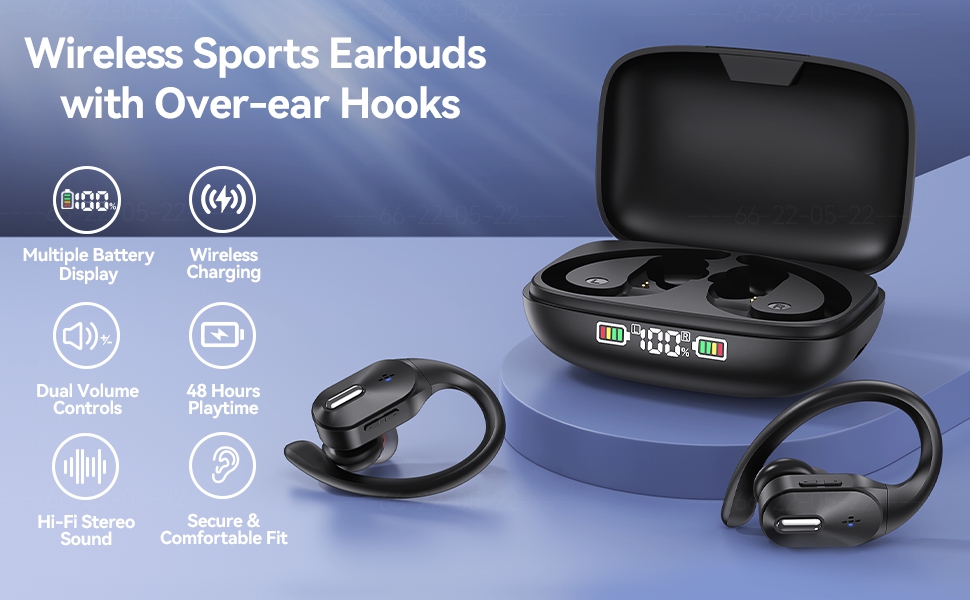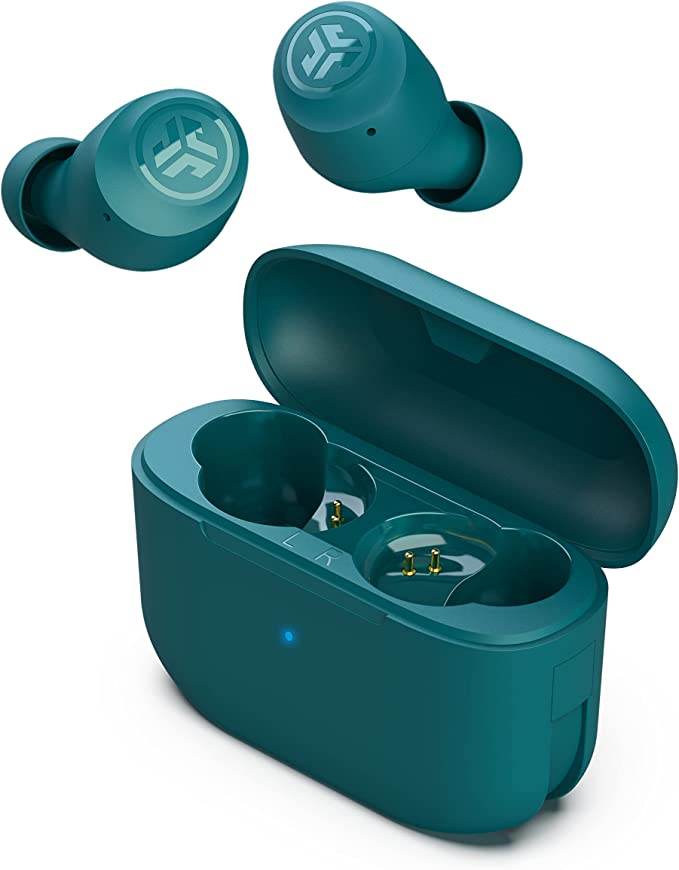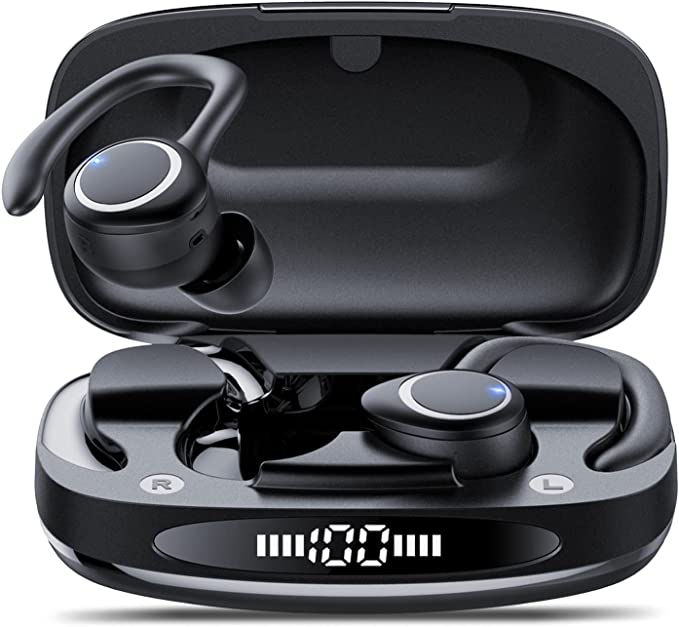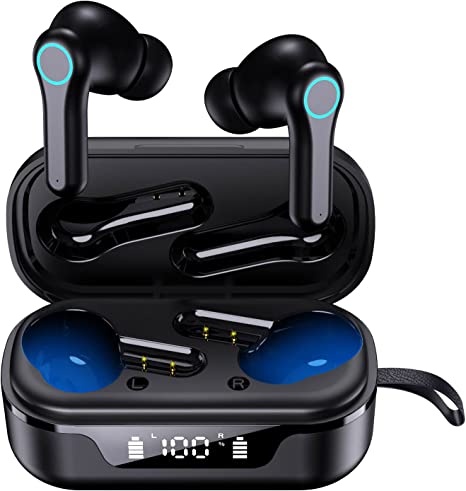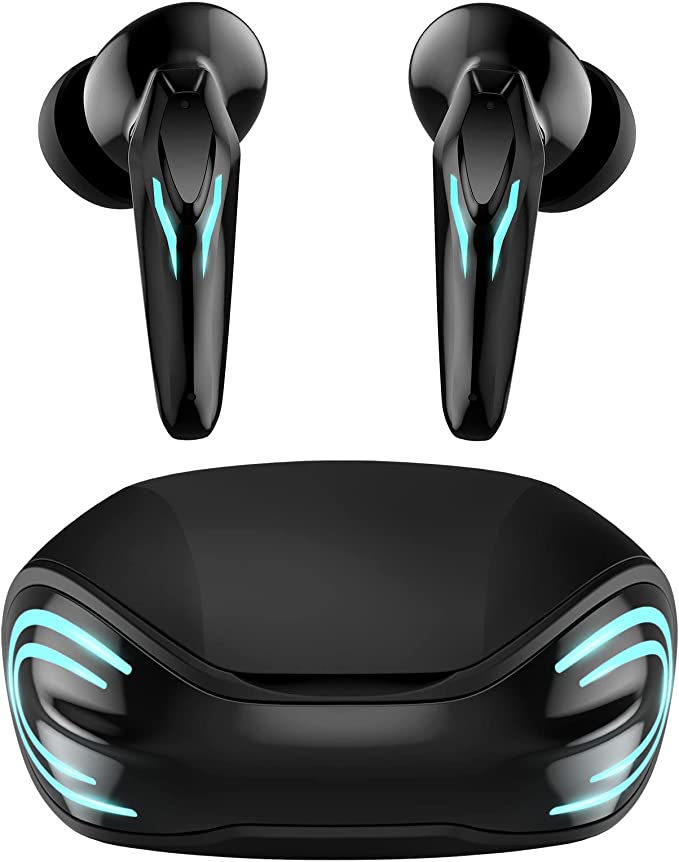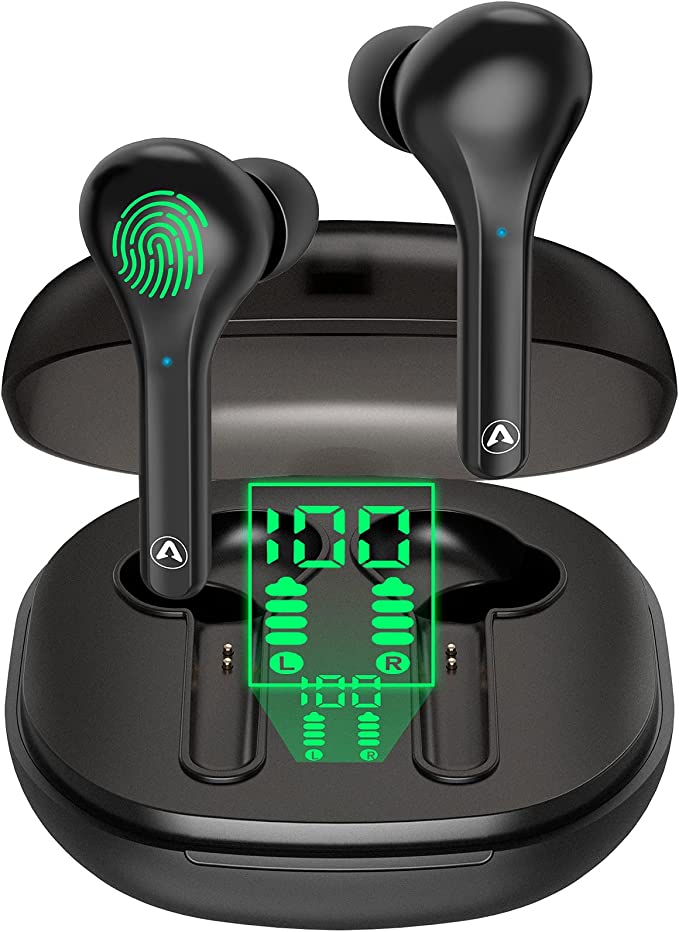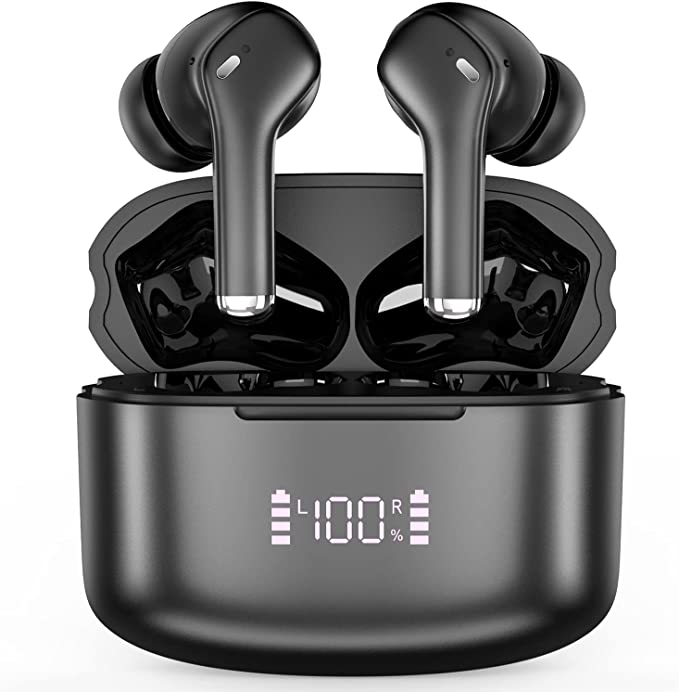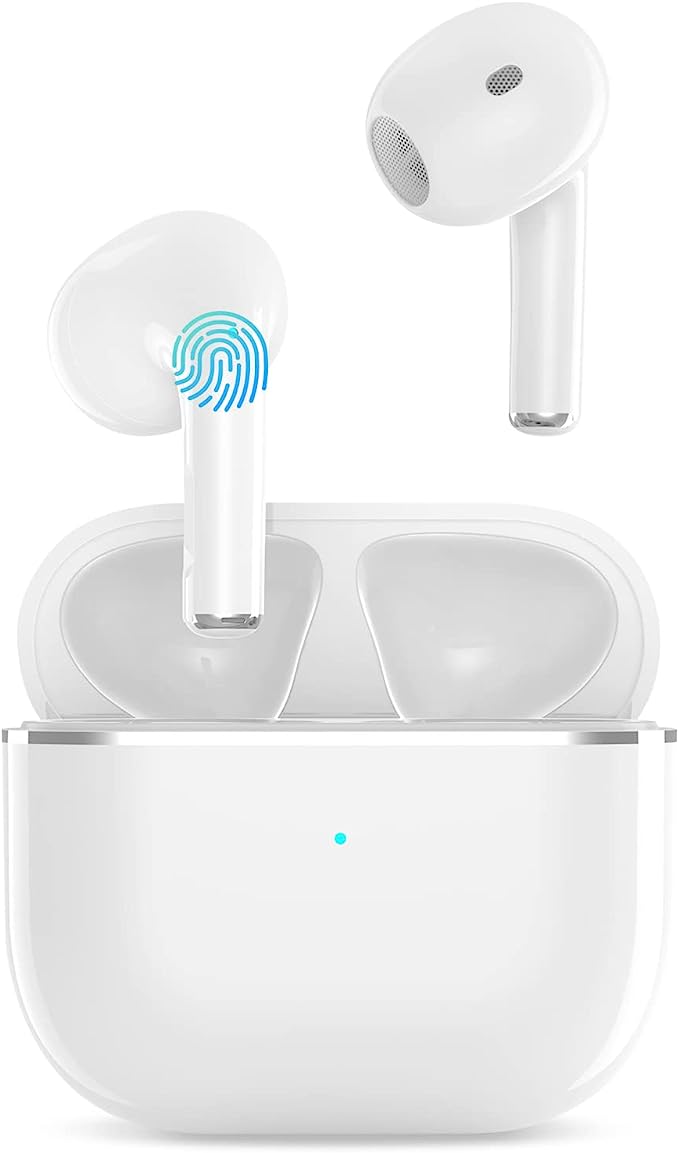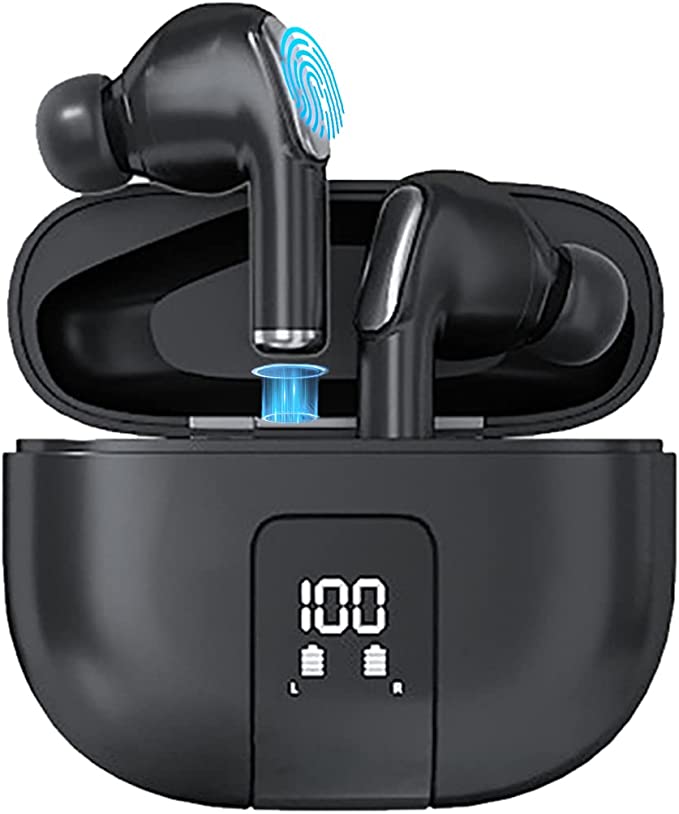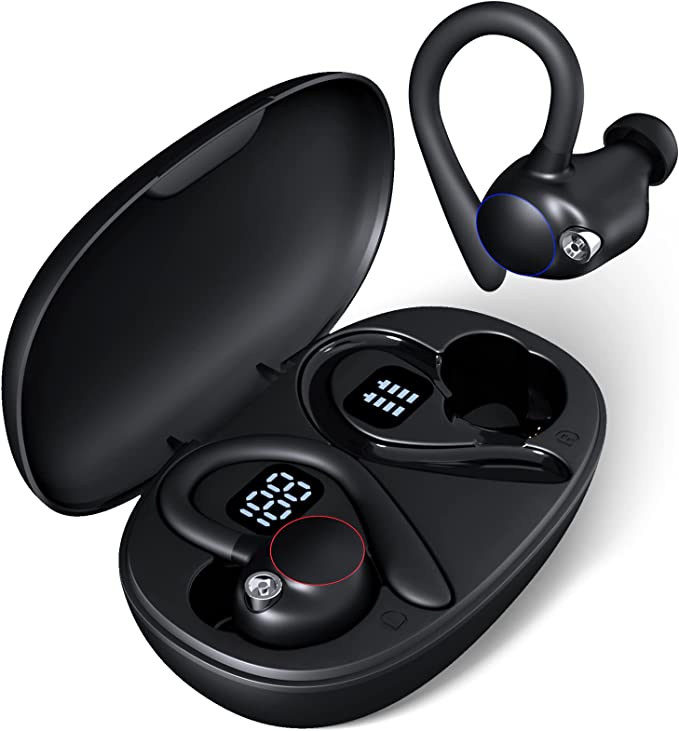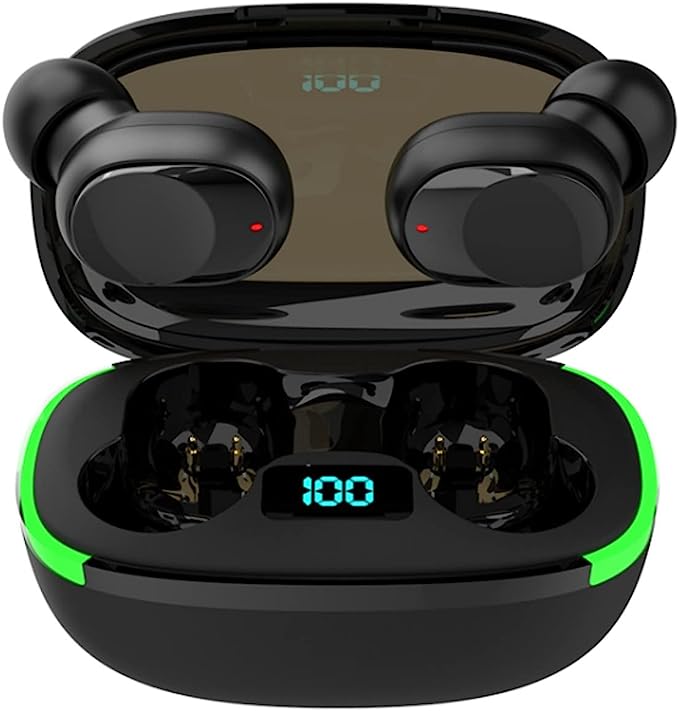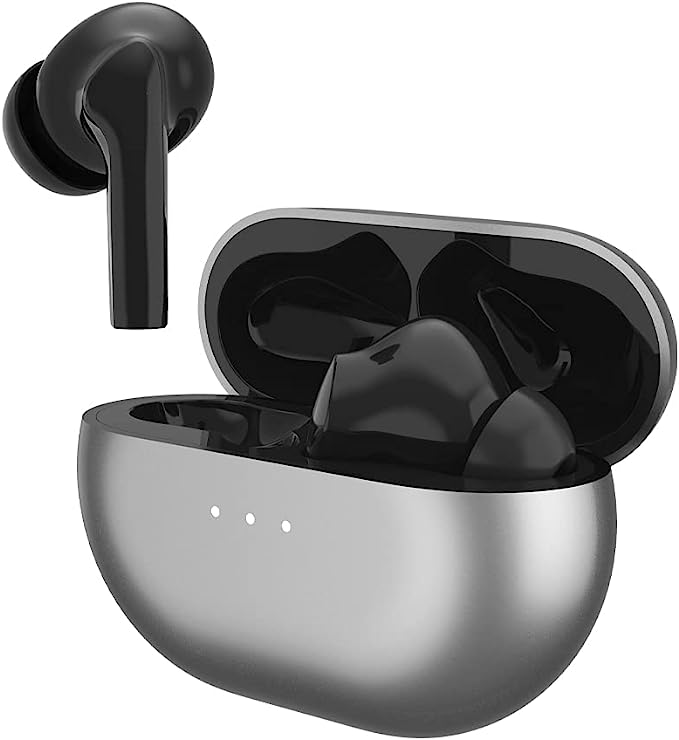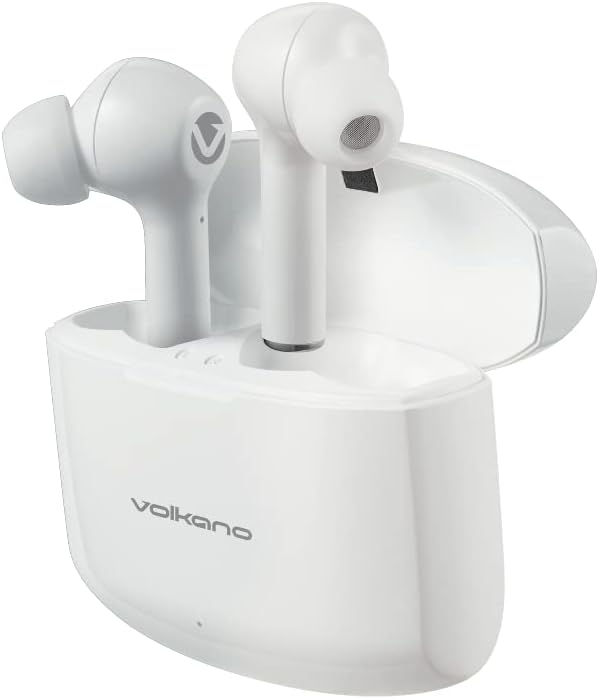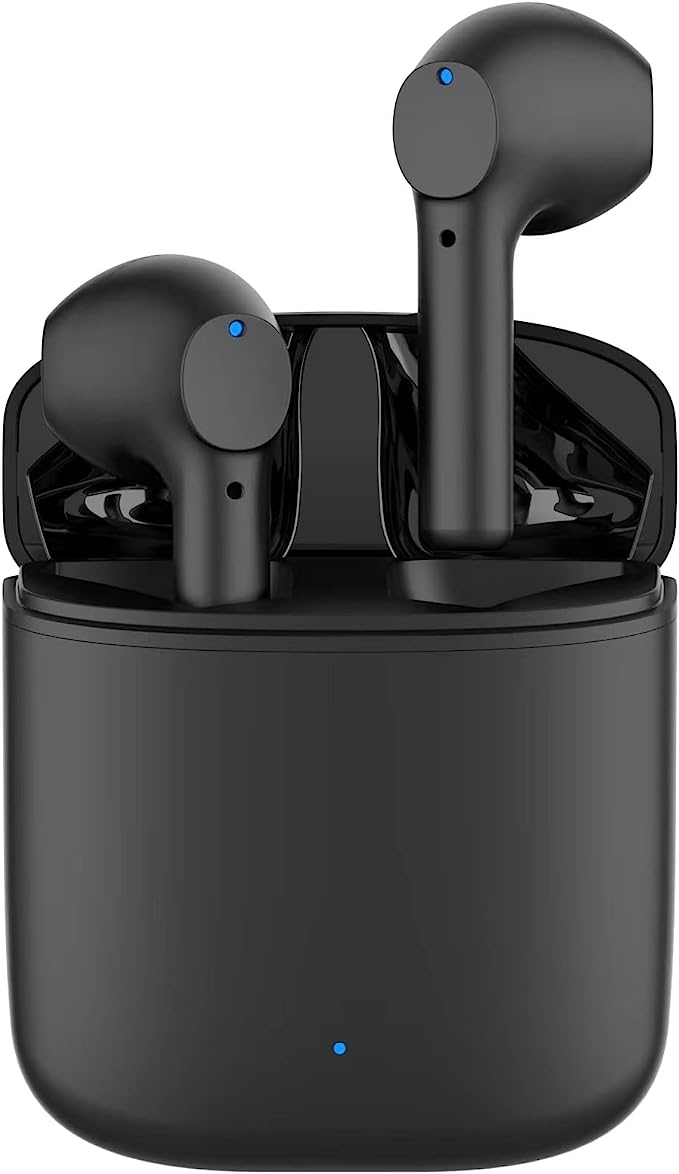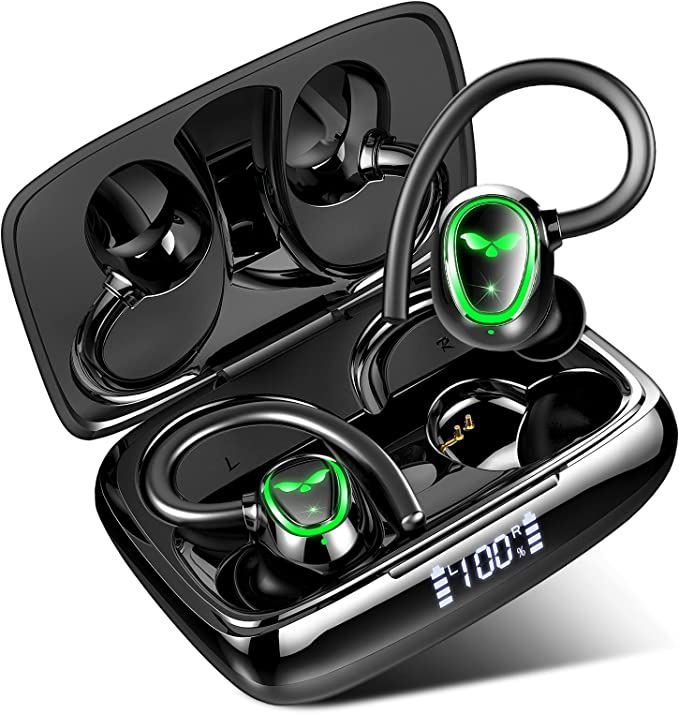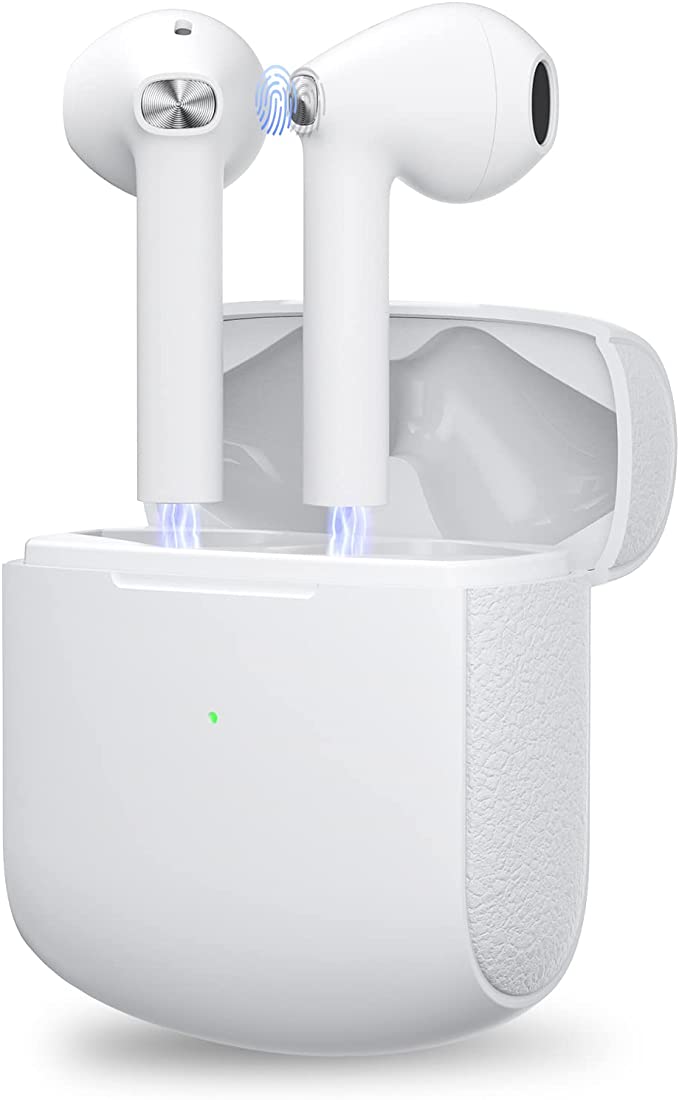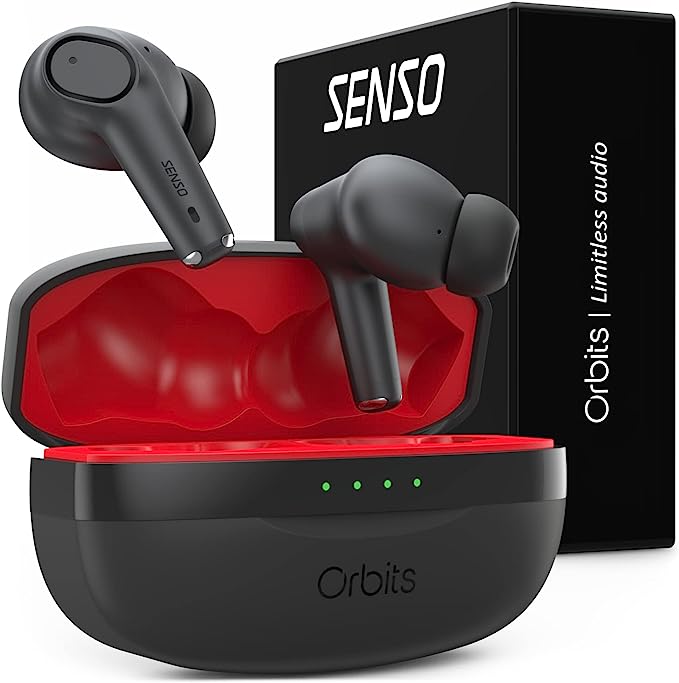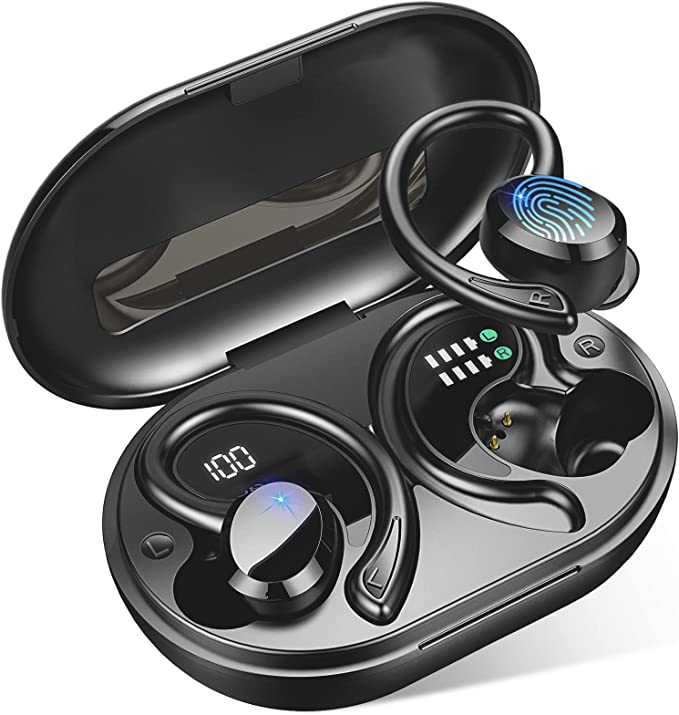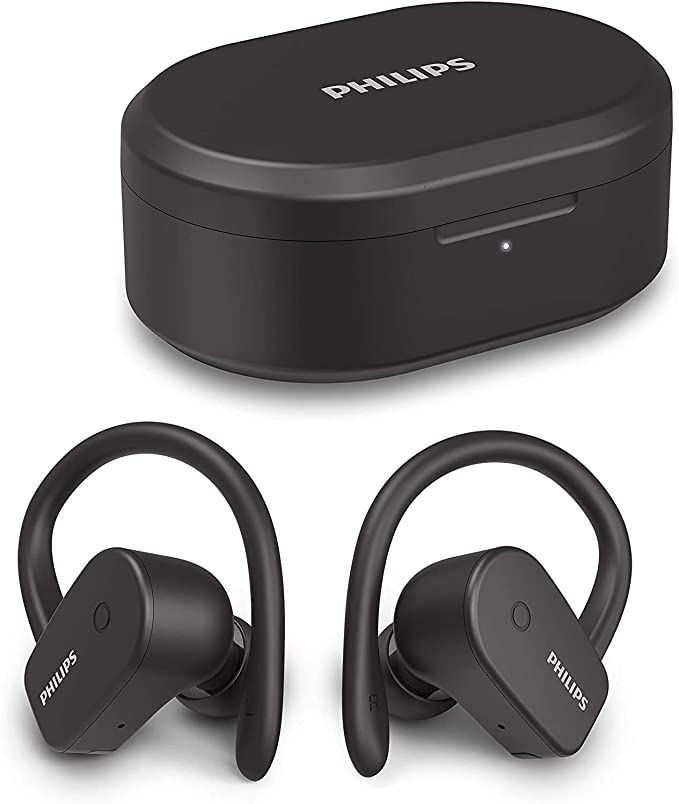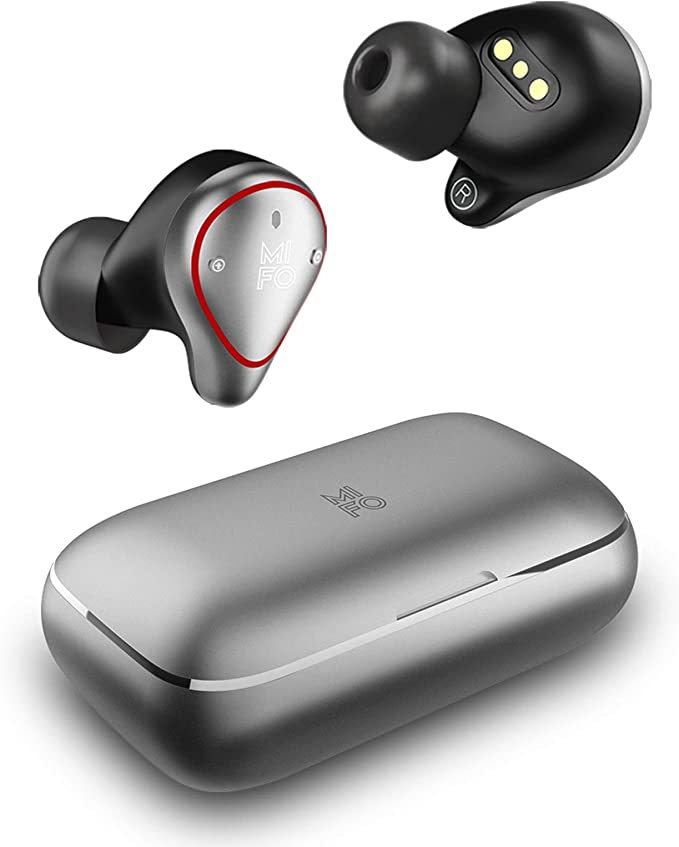MIUONO T1.0 Wireless Earbuds: Affordable Yet Impressive Bluetooth Earbuds
Update on July 3, 2025, 5:34 a.m.
In our hyper-connected world, true wireless earbuds have become as commonplace as smartphones. They’re not just accessories; they’re essential tools, seamlessly integrating our audio experiences into every facet of life. But beneath their unassuming facades lies a symphony of sophisticated engineering. How do these tiny devices deliver crisp sound, reliable connections, and days of playback, all while fitting comfortably in our ears? Let’s dissect the MIUONO T1.0 Wireless Earbuds as a compelling case study, unraveling the scientific principles that allow high-value performance to become surprisingly affordable. Think of it as a peek into the elegant “code” that makes these miniature marvels “run.”

The Invisible Wires: Decoding Bluetooth 5.1’s Connectivity Algorithms
Every interaction with your wireless earbuds begins with Bluetooth. From its inception in the late 1990s—a technology named after a 10th-century Viking king, Harald Bluetooth, known for uniting Scandinavia—it has evolved remarkably. The MIUONO T1.0 leverages Bluetooth 5.1, a significant advancement from earlier versions like Bluetooth 4.2. This isn’t just a number bump; it represents crucial performance upgrades.
Bluetooth 5.1 acts like a highly optimized data highway for your audio. It boasts faster data transfer rates and a more stable connection, which translates directly into fewer frustrating dropouts and interruptions, even when you’re moving or in crowded spaces. For our programming analogy, imagine this as an incredibly efficient data packet routing system. Furthermore, Bluetooth 5.1 features improved energy efficiency, a critical component for devices reliant on tiny batteries. This means less power is consumed for the same amount of data transmitted, directly contributing to the earbud’s extended playtime.
Perhaps one of the most user-friendly features is the “one-step pairing.” This isn’t magic; it’s a clever implementation of Bluetooth’s advertising and discovery protocols. When you open the charging case, the earbuds act like small beacons, broadcasting their presence. Your phone, constantly scanning for such signals, quickly identifies and connects to them, eliminating manual pairing steps. It’s a beautifully simple user interface on top of complex underlying “code.” The result? A swift, reliable connection that rarely requires a second thought, allowing you to move from pocket to ear in seconds.

Crafting Sound: The Acoustics and Digital Audio Pipelines
The promise of “Hi-Fi Stereo Sound” from such compact devices might seem ambitious, but it’s a testament to refined acoustic engineering. Inside each MIUONO T1.0 earbud, a tiny dynamic driver acts like a miniature loudspeaker. This driver, composed of a magnet, a voice coil, and a diaphragm, vibrates precisely to convert electrical signals back into the sound waves our ears interpret. The quality of these components and their acoustic tuning dictate the overall sound signature.
The T1.0 aims for a “V-shaped” sound profile, a common tuning strategy where the deep bass frequencies are boosted (providing that satisfying thump) and the bright treble frequencies are enhanced (for clarity and sparkle), while the midrange is present but slightly less emphasized. This energetic sound is often preferred for genres like hip-hop, electronic dance music, and pop, delivering an impactful listening experience.
Digital audio, however, needs to be compressed for efficient wireless transmission. This is where audio codecs like AAC (Advanced Audio Coding) and SBC (Subband Coding) come into play. These are algorithms that efficiently encode and decode audio data. While SBC is the universal baseline for Bluetooth, AAC offers a higher quality experience, particularly noticeable with Apple devices. Understanding these codecs is like knowing the compression format of your digital media files – they influence the fidelity of the “rendered” sound.
It’s also crucial to remember that personal audio experience is highly subjective. What sounds “amazing” to one listener might seem “too bassy” to another. Some users, as with many affordable earbuds, might notice that the “bad sound quality” they perceive could often be improved by ensuring a proper ear tip seal. A snug fit ensures that bass frequencies are not lost, and the passive noise isolation is maximized. Without a good seal, even the best drivers will struggle to deliver their full potential, much like a poorly calibrated speaker. Users often find that experimenting with the included ear tip sizes can dramatically alter their sound perception.

Clear Conversations: The Intelligent Filtering of Noise Reduction Microphones
Have you ever tried to have a phone call using earbuds in a bustling environment, only to be told you sound like you’re in a wind tunnel? This is where the MIUONO T1.0’s built-in microphone with noise reduction steps in, acting as an intelligent “data filter” for your voice.
Traditional small microphones struggle with distinguishing between a speaker’s voice and environmental din. The T1.0 addresses this with advanced Digital Signal Processing (DSP) technology. Imagine DSP as a sophisticated software algorithm running on a tiny chip within the earbud. This algorithm constantly analyzes the audio captured by the microphone(s). It identifies patterns associated with human speech and differentiates them from patterns of ambient noise—be it a whirring fan, street traffic, or chatter.
By actively “suppressing” these unwanted noise patterns, the DSP ensures that your voice is isolated and transmitted with greater clarity. While this is primarily a solution for clarifying your outbound voice on calls, rather than actively canceling noise for your listening pleasure (a feature known as Active Noise Cancellation, or ANC, typically found in more premium earbuds), it significantly enhances the utility of the T1.0 for everyday communication. Users generally find that in quieter settings, the call quality is clear and functional, making it suitable for impromptu chats or virtual meetings.
The Energy Core: Lithium-Ion Batteries and Power Management Efficiency
In the world of portable electronics, battery life is paramount, and it’s a direct reflection of smart power management. The MIUONO T1.0’s impressive endurance—over 7 hours on a single charge, extended to up to 21 hours with the charging case—is largely due to its use of Lithium-Ion (Li-ion) batteries and the energy efficiency of Bluetooth 5.1.
Li-ion batteries are the workhorses of modern portable tech due to their high energy density, meaning they can store a significant amount of power in a small volume. The charging case acts as a portable “power bank,” topping up the earbuds multiple times. This allows for prolonged usage without needing a wall outlet, much like a background “service” constantly ensuring your main “application” (the earbuds) has enough power.
The inclusion of a Type-C charging port is also a welcome modern convenience. USB-C is a robust and reversible standard that often supports faster charging speeds than its predecessors. This means less time tethered to an outlet and more time enjoying your audio, effectively reducing the “downtime” of your device. LED indicators inside the case also serve as a simple “dashboard,” showing you the remaining battery “percentage” at a glance, eliminating guesswork.
Built for Real Life: The Engineering of IPX5 Durability
For many, earbuds are not just for passive listening; they’re companions for active lifestyles. This is where the IPX5 water-resistant rating of the MIUONO T1.0 becomes a key feature, a testament to thoughtful mechanical and materials engineering.
The IP Code, or Ingress Protection Code, is an international standard (defined by IEC 60529) that rates the degree of protection provided by mechanical casings and electrical enclosures against intrusion from solid objects and water. In IPX5, the ‘X’ signifies that no specific data is available for solid particle protection (like dust), but the ‘5’ is crucial for water. An IPX5 rating means the earbuds are protected against low-pressure jets of water from any direction.
What does this mean in practical terms? It means you don’t need to worry about sweat during an intense workout, accidental splashes from a spilled drink, or even getting caught in light rain. The earbuds are designed with internal seals and perhaps hydrophobic coatings to prevent water from reaching sensitive electronic components. While not suitable for submersion (they are “water-resistant,” not “waterproof”), this level of protection covers the vast majority of daily “wet” scenarios, allowing the earbuds to function reliably as your workout partner or travel companion.
User Interface: The Intuitive Controls and Ergonomics of Interaction
Beyond the internal engineering, the interaction design of the MIUONO T1.0 focuses on user experience. The ergonomic design with three different sizes of ear tips is fundamental. It’s the “hardware interface” that ensures comfort and a secure fit. A good seal is not just about comfort; it’s vital for maximizing passive noise isolation and ensuring the full impact of the bass frequencies is delivered.
The choice of physical button controls on each earbud offers a tangible and precise method of interaction. In contrast to touch-sensitive surfaces that can sometimes be prone to accidental presses or require a specific gesture, physical buttons provide clear tactile feedback, akin to hitting a reliable “execute” command. This allows users to confidently manage calls (answer, decline), control music playback (play, pause, skip tracks), and activate voice assistants without fumbling, even mid-run or with gloved hands. It’s a design decision prioritizing consistent, immediate response from the “system.”

Conclusion: The Democratization of Advanced Audio – A Look Forward
The MIUONO T1.0 Wireless Earbuds are more than just an affordable audio solution; they are a prime example of how advanced engineering principles and continuous technological refinement can lead to significant value for the everyday consumer. From the efficient data handling of Bluetooth 5.1 and the thoughtful acoustic tuning for a lively sound, to the intelligent noise filtering for clear calls and the robust IPX5 water resistance, these earbuds embody the spirit of accessible innovation.
They demonstrate that you don’t need to spend a fortune to enjoy the benefits of modern wireless audio technology. As manufacturing processes become more efficient and core components become more refined, we are witnessing a powerful trend: the democratization of features that were once considered premium. The MIUONO T1.0 serves as a reminder that the most impactful technology often works tirelessly behind the scenes, seamlessly integrating into our lives, quietly executing its complex “code” to deliver a richer, more connected experience. These earbuds are a testament to the ongoing evolution of personal audio, making sophisticated sound accessible to everyone.

